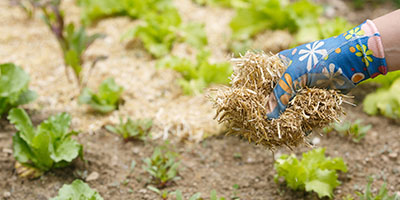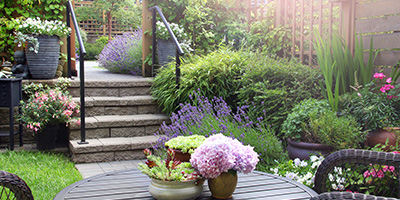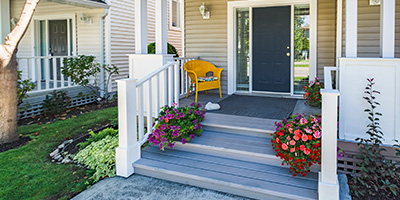How to Redo a Flower Bed

Tips for Upgrading Your Flower Bed
A new flower bed can completely transform your front or backyard. On the other hand, an unkempt, overgrown flower bed can kill your home’s curb appeal.
How do you know when to redo flower beds in your yard? Many homeowners redo their existing flower beds seasonally with a small refresh in the spring, but others may find their flower beds overgrown with weeds and in desperate need of some TLC.
While redoing a flower bed may seem like a daunting task, we’re here to walk you through the process for clearing out and building a DIY flower bed that even a professional landscaper could be proud of.
How to Prepare a Flower Bed
In order to truly transform your old, overgrown flower bed into a new, thriving one, you must start with a clean slate. That means dividing or removing old perennials, which can be potted if healthy, and getting rid of all weeds, which typically live in conditions that don’t favor other plants. Your bed should be uninhabited but look clean.
The main purpose of preparing a flower bed is to improve soil fertility and drainage. To lightly prep a flower bed when you’re keeping existing features, you’ll need to clear out any weeds and turn organic matter in with the soil. Organic matter is actively decomposing plant or animal material, such as compost or manure, which improves the quality and fertility of your soil. If you’re planning for more of an overhaul, follow along with the following steps to completely redo an existing flower bed.
How to Clear an Overgrown Flower Bed
1. Pull Out the Weeds
To prepare your flower bed for new plants, you must clear and deeply cultivate the existing planted areas. To get control over short weeds, use a garden trowel – a shovel with a flat, pointed blade – to dig up the roots of the weed. Taller weeds can usually be pulled out by hand, and a trowel can help you free the roots from the ground. Make sure to clear out any leaves left behind, as they can further spread weed growth.
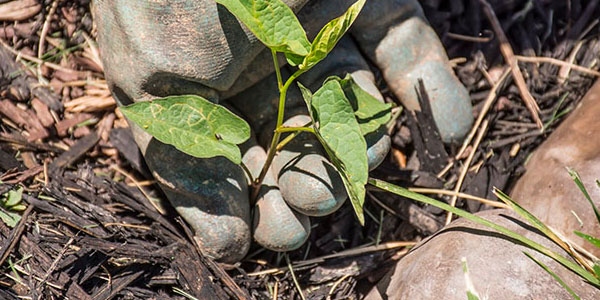
2. Clean Out Existing Plants
Once you’ve cleared out the weeds, roots and other debris, clean out old perennials. If you’re starting fresh in your new DIY flower bed, you can give the perennials away or dispose of them. If you’re not ready to say goodbye to your perennials, but it appears they’ve outgrown their space, dividing and replanting the sections in a new location will help them rejuvenate. You can save perennials to replant by dividing and potting them.
Follow up by using a weed killer on the newly cleared out soil. When you’re redoing your flower beds in the springtime, applying an herbicide after you’ve pulled weeds will set your garden up for success the rest of the year. Use caution when choosing a weed killer if you are planning to reseed your lawn, as it could interfere with grass growth in the surrounding area.
3. Prep the Ground
Once weeds and old plants have been cleaned out of the bed, rake through the soil to prepare your flower bed for composting. Soil should be smooth for the next steps, so it’s important to remove any rocks or gravel. If there are a lot of rocks in your soil, you may need a rototiller to remove them all. Learn more about how to remove rocks from soil and the tools you’ll need to do it.
4. Add a Layer of Compost
To enrich the soil and see more fruitful plant growth, lay a 2 to 3-inch layer of compost on the flower bed and turn into the soil with a shovel. Adding organic matter, such as compost, leaf mold, peat or manure, provides the soil with essential nutrients for your plants. Make sure you’re working with moist soil and turning over from about a foot deep.

Quick Tip
For the truly sustainable gardener, learn how you can build your own homemade compost bin.
5. Remove Yard Waste to Start Fresh With Your New Flower Bed
When you’ve finished clearing your overgrown flower bed, you’ve likely accumulated a lot of yard waste from the weeds and plants you’ve torn out, as well as from excess soil and compost. You should haul all your landscape debris away from the newly cleared area in a wheelbarrow prior to building a new flower bed.
From a seasonal refresh to a complete garden overhaul, we’ll help you find the right yard waste disposal option for landscaping projects of all sizes.
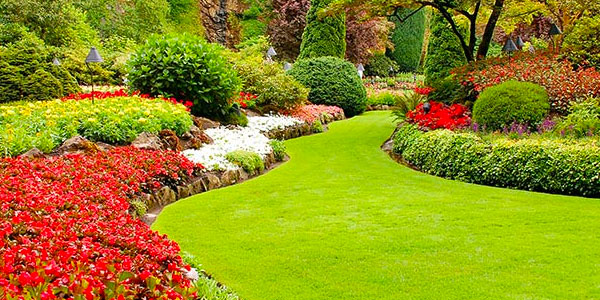
Redesign Your Flower Bed
If you’re putting in the work to completely redo your flower bed, it makes sense to reconfigure and perfect the layout. For maximum visual appeal, your flower bed should be at least 6 feet wide.
You may consider turning straight edges into more appealing curved edges during your redesign. Adding curves and rounded corners can make your flower beds appear larger than straight, sharp-cornered ones, and they blend in more smoothly with the rest of your landscaping. Plus, curved beds are easier to mow around.
You also need to decide where you’ll be placing your plants ahead of time. Sketch out a drawing of your new DIY flower bed before making any changes so you can keep your edges crisp and clean.
Garden Design Tips
- When building a flower bed, plan for your garden’s focal points first, which would be larger plants and trees. Then, make room for your hedges. Decorative shrubs and flowers should be worked into the design last.
- Take note of how many hours of direct sunlight your flower bed receives each day, and take this into consideration when choosing plants. Learn more about sunlight tracking in gardens here.
- If you’re redoing a flower bed for summertime, aim for flowers that are in the yellow, red and orange color families so they stand out in the sunniest months.
- Plant flowers in odd-numbered groups of three or more for a fuller, more cohesive design.
- Be conscious of any seasonal allergies you or your family members have, and either avoid pollen-producing plants or place them away from any windows.

“When planning a new flower bed in an existing bed, the first thing you’ll want to do is identify the plants that are there, do research on them and decide if you want to keep them or not. Pull out the plants you don’t want so you can see the space you have left – that will guide you on plant placement of your new flowers and shrubs.”
Jami Boys, An Oregon Cottage
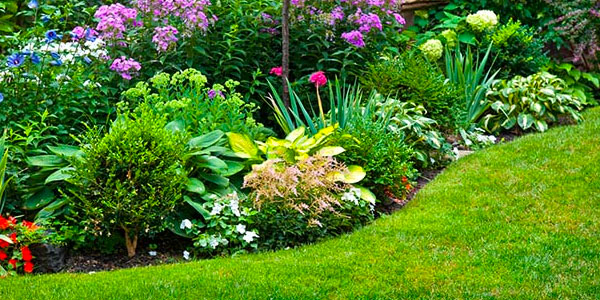
Building a New Flower Bed Step by Step
1. Add New Soil
Prior to planting your DIY flower bed, it’s important to lay a good foundation for the flowers to grow. If you visit a local garden supply store, a landscape expert may be able to recommend what kind of soil is right for your garden.
Lay down a layer of garden-specific soil about 6 inches deep and spread it across the bed, working it in with the compost you added earlier to help boost the nutrition and quality of the new soil. Once finished, give your bed 30 to 60 days to settle before planting.

Quick Tip
Work with soil when it’s damp, but not wet. Digging soil that is too dry is difficult and can be harmful to the dirt, and soil that is too wet will clump when turned over.
2. Plant and Mulch the Flower Bed
Armed with our garden design tips from above, you can confidently bring your DIY flower bed sketch to life.
When arranging and planting your groups of flowers, consider how they’ll look from all angles around your home. This may include arranging them from shortest to tallest or putting color groups together. This is the step where you can really show off your landscape style and boost curb appeal.
If you’re replanting potted perennials, make sure to place them at the same soil depth they were at before. New plants should be placed at the same soil depth they had in their nursery containers. Any damaged roots or leaves should be trimmed before planting.
After planting, remember to water your plants until there are small puddles around their bases. Spread a thin layer of mulch throughout your flower bed to help retain soil moisture and prevent weed growth. However, mulch should never touch the plant stems, as it can kill them.

“I like using the stuff labeled ‘garden compost’ at our local yard products center. It’s black (instead of orange like bark dust), and feeds the soil as it breaks down, providing all the nutrition these shrubs will need.”
Jami Boys, An Oregon Cottage
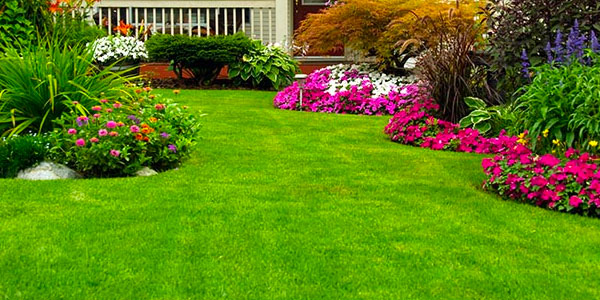
3. Clean Up the Yard
As you wrap up your DIY flower bed project, determine how much yard waste you’ll be disposing of. The disposal solution you would need varies based on how large the job is, whether you’re redesigning a flower bed and removing dirt or removing multiple trees and shrubs from a big yard.
For a small seasonal refresh and weed removal, you can likely bag up the debris and use your city’s curbside service. If you’ve done a landscaping overhaul after clearing your overgrown flower beds, you may consider renting a dumpster to remove your yard waste. This allows you to clean up at your own pace, while getting rid of all your yard debris at once when the project is complete.
Not sure what to do with all your leftover soil? Check out our Dirt Disposal Guide!

